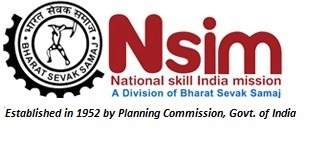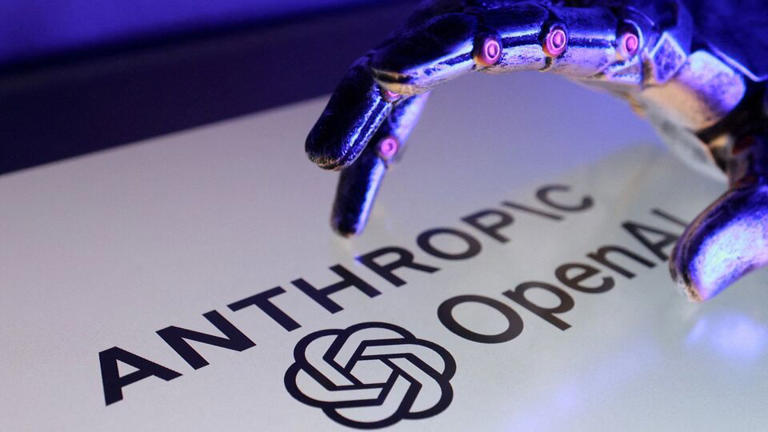Stories you may like
Swiggy Founders
Sriharsha Majety, Nandan Reddy, and Rahul Jaimini are the co-founders of Swiggy, a leading Indian food delivery platform, founded in 2014. Here's a more detailed look at their roles and the story behind Swiggy:
- Founding and Early Days:
- The trio, Sriharsha Majety, Nandan Reddy, and Rahul Jaimini, launched Swiggy in 2014.
- Initially, Swiggy focused on a limited area with a small team and a few delivery partners.
- They started with a simple idea: to make it easy for people to order food online and have it delivered.
- Key Roles and Contributions:
- Sriharsha Majety: He is the Managing Director and Group Chief Executive Officer of Swiggy, focusing on the company's overall strategy and operations.
- Nandan Reddy: He is the Whole-time Director - Head of Innovation, focusing on new technologies and initiatives.
- Rahul Jaimini: He was initially responsible for designing Swiggy's software and mobile applications. He left the company in 2020.
- Swiggy's Growth and Impact:
- Swiggy has grown to become a major player in the Indian food delivery market, connecting consumers with a vast network of restaurants and stores across hundreds of cities.
- They prioritize excellence in logistics operations and building a strong management team.
- Swiggy has also expanded into other areas, such as grocery delivery and instant delivery services.
- Current Status:
- Rahul Jaimini left Swiggy in 2020 but continues to be a board member and shareholder.
- Majety and Reddy continue to lead the company, with Majety as MD and CEO and Reddy as Head of Innovation.
Swiggy co-founders Sriharsha Majety and Lakshmi Nandan Reddy Obul's Cost to the Company (CTC) stand at Rs 2.5 crore each. The fixed pay components of both Majety and Reddy are Rs 1.75 crore, which is 70 percent of their annual remuneration for 2024, while the variable pay component is Rs 90 lakh. According to the updated draft red herring prospectus (DRHP) submitted to SEBI on September 26, the CTC for Swiggy co-founders will increase to Rs 3 crore in 2026. Notably, Rahul Jaimini, Swiggy's third co-founder, quit the platform in 2020.
Majety has been appointed as the Managing Director and Group Chief Executive Officer from 1 April 2024 while Reddy has been appointed as the Whole-time Director - Head of Innovation for a period of five years each. In FY2024, Swiggy paid Rs 6.4 crore of remuneration to Reddy and Majety, including a one-time ex-gratia payment of Rs 4.5 crore.
Currently, Majety holds 1.9 crore of equity shares in Swiggy, while Reddy holds 3.04 lakh.
Majety graduated from Birla Institute of Technology and Science, with a degree in electrical and electronics engineering. He completed a post-graduate diploma in management from the Indian Institute of Management, Calcutta. Reddy holds a master’s degree in science (honors) in physics from BITS Pilani. He previously worked with Intellectual Capital Advisory Services Pvt. Ltd. (Intellecap) as an associate in business consulting.
Notably, Deepinder Goyal, founder of Swiggy competitor Zomato, has voluntarily waived his salary for a period of 36 months starting from April 1, 2021.
Other key managerial personnel at Swiggy and their remuneration
Swiggy's Chief Financial Officer (CFO) Rahul Bothra received a remuneration of Rs 10.04 crore (including a one-time ex-gratia payment of Rs 7 crore) during fiscal 2024. Bothra joined Swiggy on September 1, 2017. Prior to joining Swiggy, Bothra was associated with Wipro Limited, Britannia Industries Limited, and Olam International Limited. He holds a bachelor’s degree in commerce from Bangalore University.
Madhusudhan Rao Subbarao, the Chief Technology Officer at Swiggy, joined the company on June 21, 2018. Subbarao received a remuneration of Rs 6.2 crore (including a one-time ex-gratia payment of Rs 3 crore and contribution to NPS and other perquisites of Rs 11 lakh). Subbarao previously worked at Boomerang Commerce India Private Limited and Amazon.
Amitesh Jha, the Chief Executive Officer – Instamart, holds a bachelor’s degree in technology (chemical engineering) and, a master’s degree in technology (process engineering and design) from the Indian Institute of Technology, Delhi, and has completed the postgraduate programme in management from Indian Institute of Management, Ahmedabad. Previously, Jha worked at Flipkart Private Limited for 14 years as senior vice president. Jha joined Swiggy recently.
Swiggy's Chief Human Resources Officer Girish Menon received a remuneration of Rs 7.3 crore in FY2024. Menon has been associated with Swiggy since 19 April 2016.
Swiggy Case Study and Marketing Strategy – A decade or so ago who would have known how online food ordering and delivery services will take the entire nation by storm. One such food ordering and delivery app that has made a name for itself is Swiggy. The company was founded in the year 2014 and despite tough competition from arch-rival Zomato – the former has been successful in capitalizing the market in many regions and becoming the “largest online food ordering and delivery platform.”
In this blog post, we will take a look at the marketing strategies followed by Swiggy through a case study. The success story of this online food ordering app – which has also moved on to groceries now – will continue to inspire many startups and future entrepreneurs for years to come.
Swiggy is the brainchild of 3 individuals named Sriharsha Majety, Nandan Reddy and Rahul Jaimini.
Majety is an alumnus of BITS Pilani and IIM. Before co-founding Swiggy, he worked as a recruitment co-ordinator for IIM. Then he co-founded Bundl Technologies Pvt Ltd along with Nandan Reddy, which served as the foundation for Swiggy.
Co-founder Nandan Reddy completed his M. Sc. from BITS Pilani in the year 2010. Before heading over to Bundl, he had become the founding partner of Zurna, a restaurant in Hyderabad.
Jaimini was the one who designed Swiggy’s software and mobile applications. He is a former IIT Kharagpur student, and before joining Swiggy, he had worked with renowned companies like Philips.
The story behind Swiggy
When Sriharsha Majety and Nandan Reddy set out on the path of entrepreneurship in 2013, they launched a logistics solution named Bundl Technologies. Unfortunately, the startup did not turn out to be successful; as a result, Bundl was shut down a year later. After some considerable thought, they returned with a business idea, but this time in the food industry. Thus came an online food ordering and delivery app which was designed by Rahul Jaimini. He took care of everything from software and databases to the user-interface and functionality.
When the app went live in a limited area, the company had to brace up for some competition in the form of Foodpanda and Ola Café. Swiggy started its operations with just 6 delivery boys and 20+ restaurants on board.
Swiggy Funding
The online food ordering and delivery app has come a long way, courtesy of multiple rounds of funding and backing by renowned global investors. Let’s take a look at the funds that Swiggy has raised over the course of time:
- $80 million in Series E Funding in May 2017
- $100 million in Series F Funding by Prosus Ventures in February 2018
- $210 million in Series G Funding by Prosus Ventures and DST Global in June 2018
- $1 billion in Series H Funding by Prosus Ventures in December 2018
- $800 million in Series J Funding by Falcon Edge Capital and Prosus Ventures in April 2021
- $1.3 billion in the next funding round led by SoftBank Vision Fund 2, Prosus Ventures and Accel Partners in July 2021
In a nutshell, Swiggy has raised more than $3.7 billion in over 15 rounds of funding.
Swiggy Revenue Model
Swiggy generates revenue through a number of ways. Let’s take a look at each of the methods one-be-one:
1) Commissions
A restaurant has to pay a commission for every order that it receives through the Swiggy app. Roughly 20%-25% of the total order value is charged as commission from the restaurants.
2) Delivery Fee
A nominal delivery fee (including distance fee) is also applied on every order. This, too, fetches decent revenue to the food delivery company. Furthermore, these charges are higher during the times of “high demand” and “challenging weather” conditions.
3) Paid Promotions
You must have seen many promoted restaurants while browsing inside the app. These restaurants pay a fee to appear ahead of their competitors. These paid advertisements contribute a lot to Swiggy’s revenue.
4) Instamart
Swiggy Instamart is a fast grocery-delivery system. It came into picture in the year 2020, a few months after the outbreak of the COVID-19 pandemic – a great business move at a time when people were hesitant to go out to buy groceries. The company claims to deliver groceries within 15 minutes in 15+ cities where this service is available. Swiggy reportedly makes over a million instamart sales every week.
6) Swiggy One
In March of 2021, Swiggy revamped its Swiggy Super subscription service by breaking it into 3 parts – Binge, Bite and Bit. The benefits vary across the three programs as per the subscription plans. With Swiggy One, however, all the existing Swiggy Super Members will be automatically upgraded to the new program for the remainder of their subscription. Now, patrons can enjoy unlimited free deliveries, better discounts and other benefits. These subscriptions generate a good amount of revenue for the company.
Swiggy Marketing Strategies
Swiggy makes great use of digital marketing, especially social media marketing, email marketing and paid ads.
A) Social Media Marketing
Swiggy is very active on all social media platforms. Swiggy has come up with many interesting hashtags in the past, for example #EarnYourCheatMeal #NoOrderTooSmall #EatYourVeggies. They also share humorous posts in which they spin-off the current trends into something that promotes the company’s services and vision.
B) Email Marketing
Customers receive emails from Swiggy on a regular basis. The use amazing graphics, catchy slogans and jaw-dropping deals to garner consumer interest. These emails start getting particularly interesting during major events such as IPL, World Cup, Olympics, etc.
C) PPC Advertisement
The online food ordering and delivery company runs Google text ads and display ads to offer amazing cuisines to people searching for food on Google search. Then, Swiggy also actively promotes mouth-watering dishes and restaurants to try through social media advertising on platforms such as Facebook and Instagram.
Swiggy Acquisitions
Swiggy has acquired many startups so far, here’s a list of a few notable acquisitions made by Swiggy over the years:
1) The first acquisition that Swiggy made came in the year 2017 when it acquired Bengaluru-based Asian food startup, 48East.
2) Later that year, Swiggy acquired Mumbai-based Scootsy Logistics – a startup in the field of food and fashion delivery that was struggling to make a mark. It was, however, closed soon.
3) The company purchased milk delivery startup named SuprDaily in an all cash deal
Honours & Awards Received
- Swiggy became a member of the Unicorn club – Startups with a valuation of $1 billion – in just 4 years since it was founded
- Awarded with the Outlook Social Media Award in the year 2016
- Honoured with “Start-up” Award by Economic Times in 2017
Swiggy Top Competitor
Swiggy faces direct competition from one very strong rival and that is none other than, of course, Zomato. The latter has a very strong market hold in some cities, for instance, Chandigarh. According to a report in DNA, Swiggy receives a daily order volume of 1.5 million, compared to Zomato’s 1.2 million. After acquiring UberEats, Zomato has expanded its business to 556 cities and towns. So the battle between these two food-delivery giants is getting fierce with each passing day.
Conclusion
The landscape of online food ordering has seen a lot of investment and innovation in the last few years. Furthermore, the COVID-19 pandemic has also forced the online delivery business owners and investors to think about other businesses which can be incorporated into the current business model such as groceries. Whether there is a pandemic or not, groceries will never go out of fashion as they serve the basic necessities of human beings. Therefore, Swiggy Instamart has been launched at the right time.
Swiggy appears to be on the right track in the majority of the cities. However, it should be wary of its arch-rival Zomato, which is expanding its food-delivery business more rapidly than ever. Plus, Zomato is also spending a lot on marketing which has contributed a lot to its growth in the last 2 years. Hence, the road ahead is challenging for Swiggy.
We hope that you found this case study on Swiggy insightful and interesting.
Keep following our blog to know more about how digital marketing is shaping the future of all modern-day startups.






User's Comments
Arman ali Reply
Reading about the Swiggy founders is really inspiring—they turned a simple idea into a nationwide delivery giant. Their approach to problem-solving reminds me of how careful planning is key in other areas, like managing finances with a Va Mortgage Soft Credit Check. Definitely worth studying their journey.